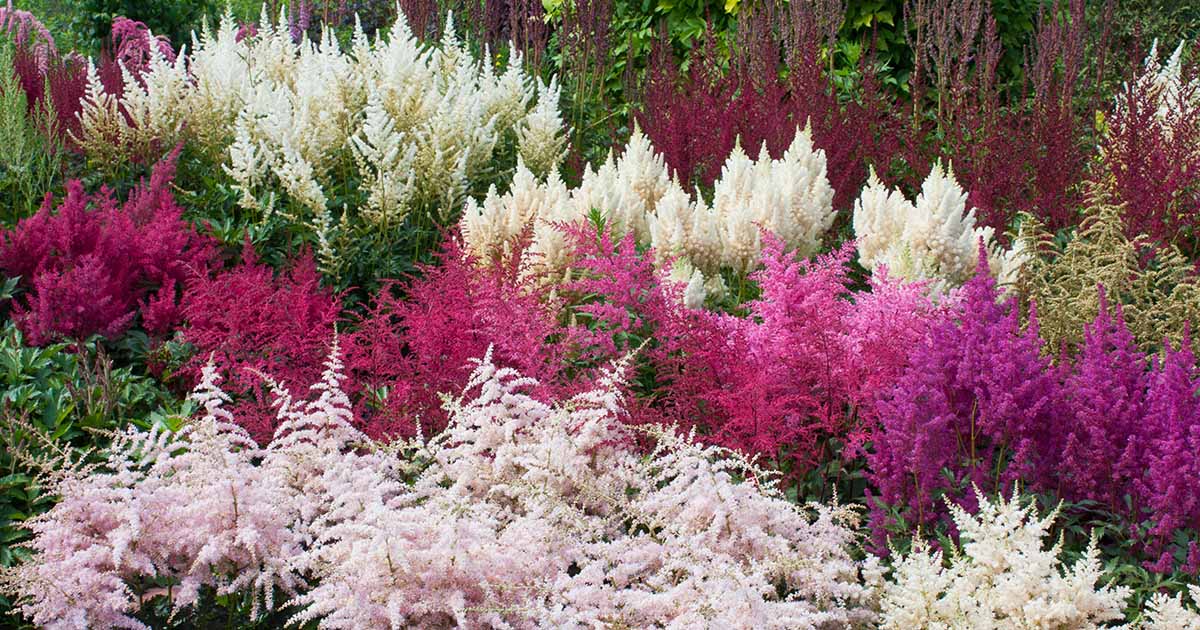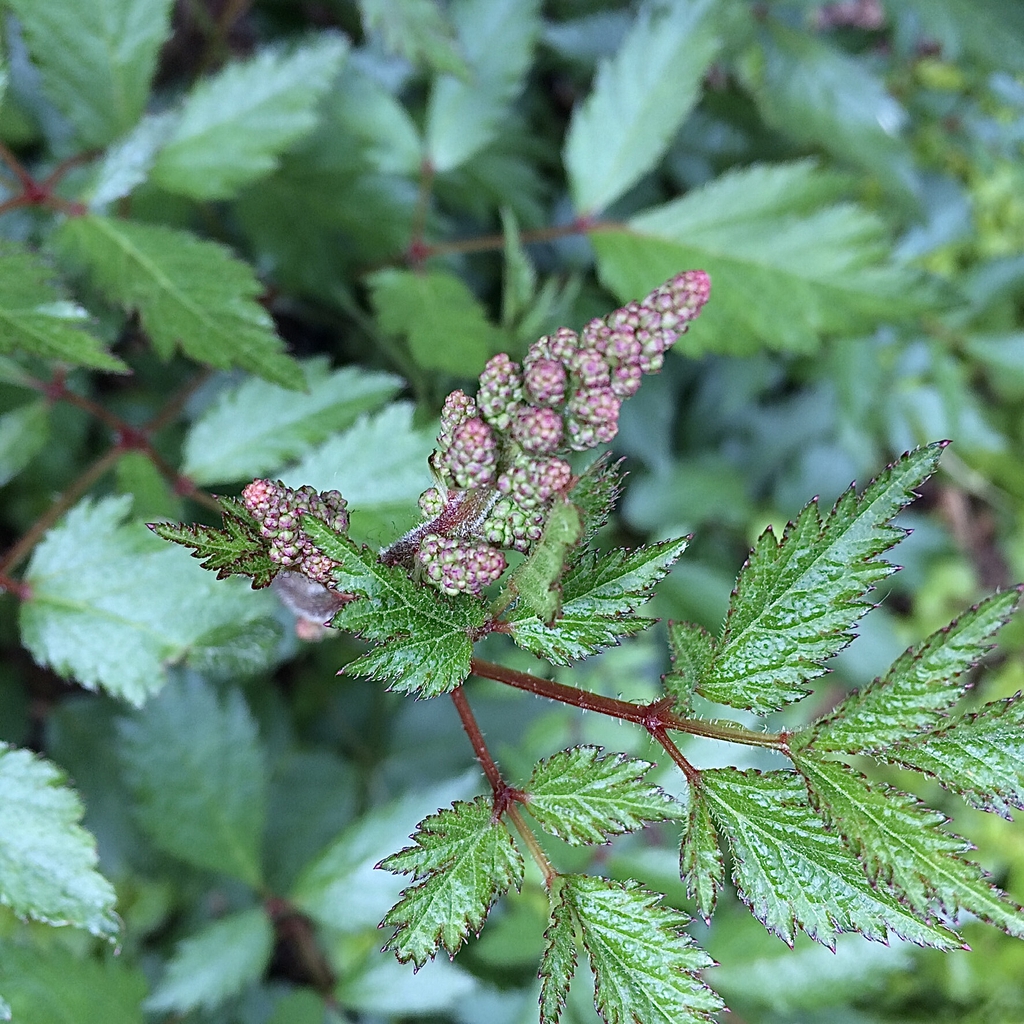Astilbe, often admired for its feathery plumes and lush foliage, is a popular choice in many gardens. However, one common issue that can plague these beautiful plants is curling leaves. This can be concerning for gardeners and plant enthusiasts alike, as it may indicate underlying problems that need to be addressed. In this comprehensive guide, we will delve deep into the reasons behind Astilbe leaves curling, the care practices that can prevent it, and the steps to restore the health of your plants.
Understanding Astilbe
Before we discuss the curling leaves of Astilbe, it’s essential to understand what this plant is and what it needs to thrive. Astilbe belongs to the Saxifragaceae family and is known for its striking flowers and feathery foliage. It’s a perennial plant that can thrive in moist, shaded areas of the garden, making it a popular choice for woodland gardens and borders.
Key Characteristics of Astilbe

- Height: Astilbe can vary in height from 12 inches to 4 feet depending on the variety.
- Flowers: The plant produces plume-like flowers that can be pink, white, red, or purple.
- Foliage: The leaves are deeply lobed and often glossy, providing a lush green backdrop for the flowers.
Common Reasons for Curling Leaves
Curling leaves in Astilbe can be attributed to several factors, ranging from environmental stressors to pests and diseases. Let’s explore these common culprits in detail.
Environmental Stressors
Environmental factors play a significant role in the health of Astilbe plants. Here are some common environmental stressors that can cause leaves to curl:
- Watering Issues: Both overwatering and underwatering can lead to leaf curling. Astilbe prefers consistently moist soil, but sitting in waterlogged conditions can be detrimental.
- Temperature Fluctuations: Astilbe thrives in cool to moderate temperatures. Excessive heat or sudden cold snaps can shock the plant, leading to curling leaves.
- Sunlight Exposure: While some varieties can tolerate partial sun, most Astilbe species prefer shade or filtered sunlight. Too much direct sunlight can cause the leaves to curl and scorch.
Pest Infestations
Pests can also be responsible for curling leaves on Astilbe plants. Here are some common pests to look out for:
| Pest | Symptoms |
|---|---|
| Aphids | Small, green, or black insects found on leaves. Leaves may curl and become distorted. |
| Spider Mites | Fine webbing and stippling on leaves. Leaves may turn yellow and curl. |
| Leafhoppers | Leaves may exhibit curling and yellowing, often with small holes present. |
Diseases Affecting Astilbe
Fungal and bacterial diseases can also cause leaf curling in Astilbe. Some common diseases include:
- Powdery Mildew: A fungal disease that covers leaves with a white powdery substance, leading to curling and distortion.
- Botrytis Blight: This disease can cause leaves to wilt, curl, and eventually die. It thrives in wet conditions.
- Root Rot: Caused by overwatering, root rot can lead to poor nutrient uptake, resulting in curled leaves.
Note: Early detection and treatment of diseases and pests are crucial to prevent further damage to your Astilbe plants. Regular inspections can help catch problems early.
Preventing Leaf Curling
Prevention is always better than cure. Here are some practical tips to ensure your Astilbe remains healthy and vibrant:
Proper Watering Techniques
Maintaining the right moisture level is vital for Astilbe health. Here are some guidelines:
- Water consistently, especially during dry spells. The soil should remain moist but not soggy.
- Use mulch around the base of the plant to help retain soil moisture and regulate temperature.
- Check soil moisture levels by inserting your finger an inch deep into the soil. If it feels dry, it’s time to water.
Choosing the Right Location

Astilbe plants prefer partially shaded areas. When planting, consider the following:
- Plant in locations with dappled sunlight or partial shade to prevent leaf scorching.
- Ensure that the area has good air circulation to reduce humidity levels and prevent fungal diseases.
- Avoid planting in areas prone to water pooling during heavy rains.
Pest Management Strategies
Regular monitoring and pest management can keep your Astilbe healthy. Here are some effective strategies:
- Introduce Beneficial Insects: Ladybugs and lacewings are natural predators of aphids and other pests.
- Use Insecticidal Soaps: If pests are detected, applying insecticidal soap can help control infestations without harming beneficial insects.
- Neem Oil: This natural pesticide can deter a wide range of pests while being safe for the environment.
Maintaining Good Garden Hygiene
Keeping your garden clean can significantly reduce the risk of diseases and pests:
- Remove any dead leaves and debris around the plant, as they can harbor pests and diseases.
- Practice crop rotation if you are growing other plants in the vicinity, as this can disrupt pest life cycles.
- Disinfect any tools that come into contact with your plants to prevent the spread of diseases.
Important Note: Always read labels and follow safety precautions when using chemical treatments in your garden.
Addressing Curling Leaves: Steps to Take
If you notice that your Astilbe leaves are curling, it’s important to take immediate action to identify and remedy the problem. Here are the steps to take:
Assessing the Situation
Begin by examining the plants closely:
- Look for visible signs of pests, such as aphids or spider mites.
- Check the soil moisture to determine if overwatering or underwatering is the culprit.
- Inspect the surrounding environment for extreme temperatures or harsh sunlight exposure.
Treating Pests
If pests are detected, apply the appropriate treatment. Here are some methods:
- Use a strong jet of water to dislodge larger pests.
- Apply insecticidal soap or neem oil according to package instructions.
- Introduce beneficial insects to control pest populations naturally.
Adjusting Watering Practices
If you suspect watering issues:
- Ensure your Astilbe receives consistent watering, adjusting based on weather conditions.
- Improve drainage in heavy soils by amending with organic matter.
- Consider installing a drip irrigation system for efficient moisture delivery.
Tackling Disease, Astilbe Leaves Curling
For plants showing signs of disease:
- Remove and dispose of affected leaves to prevent spreading.
- Apply fungicides as a preventative measure in high-humidity situations.
- Ensure proper air circulation by spacing plants appropriately.
When to Seek Professional Help: Astilbe Leaves Curling
Sometimes, despite your best efforts, the issues can escalate. Here are signs that you should consult a gardening expert:
- Persistent leaf curling after trying home remedies.
- Severe pest infestations that are beyond your control.
- Widespread disease affecting multiple plants in your garden.
Professional gardeners or extension services can provide targeted treatments and guidance tailored to your specific situation.
Conclusion
Astilbe leaves curling is a common issue that can be addressed through proper care and observation. By understanding the causes, implementing preventive measures, and responding quickly to problems, you can maintain the health and beauty of your Astilbe plants. These hardy perennials can bring vibrant color and texture to your garden, and with a little diligence, they can thrive year after year. 🌱✨
